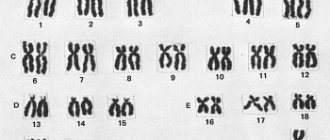In the structure of gynecological diseases, inflammatory processes of the female genital organs occupy first place, accounting for 65% of all gynecological pathologies.
Inflammatory diseases are a common cause of infertility and miscarriage; they occupy a significant share in the structure of maternal and perinatal mortality, so the issue of their prevention and treatment is quite relevant.
There are inflammatory processes of nonspecific and specific etiology.
The first group includes inflammatory processes caused by staphylococci, Escherichia coli, streptococci, Pseudomonas aeruginosa, the 2nd group - caused by trichomonas, gonococci, candida, viruses, mycoplasmas, chlamydia.
According to localization, inflammatory processes of nonspecific etiology can be in the lower parts of the genital organs and in the upper parts.
I. Inflammatory processes in the lower genital organs.
Vulvitis is an inflammation of the external female genitalia. Primary vulvitis occurs as a result of injury followed by infection (itching, scratching, abrasions, etc.). Secondary vulvitis in women occurs when there is an inflammatory process in the internal genital organs.
Bartholinitis is an inflammation of the large gland of the vaginal vestibule.
Colpitis is an inflammation of the vaginal mucosa. The inflammatory reaction can be either focal or diffuse, spreading to the vaginal part of the cervix and vulva.
Endocervicitis is an inflammation of the mucous membrane of the cervical canal. The occurrence of endocervicitis is facilitated by ruptures of the cervix (during childbirth, abortion), diseases of other parts of the reproductive system.
Leading specialists in the treatment of inflammatory diseases of the genitals in the Southern Federal District
Ermolaeva Elvira Kadirovna is a well-known and recognized specialist in the North Caucasus in the diagnosis and treatment of inflammatory diseases of the genitals. She is a gynecologist, ultrasound doctor, physiotherapist-resortologist. Elvira Kadirovna is approached by women who want to improve the aesthetics of the genital organs, reduce the size of the vagina and refresh intimate relationships from all regions Russia and foreign countries.
Ermolaev Oleg Yurievich Candidate of Medical Sciences, gynecologist-endocrinologist with 25 years of successful experience in the treatment of inflammatory diseases of the genitals. Able to see relationships that elude others.
Shchepkin Petr Sergeevich Gynecologist, specialist in the diagnosis and treatment of inflammation of the genital organs. Experienced ultrasound doctor.
About the doctors of the Clinic in detail...
| INTERNATIONAL RECOGNITION of the reputation and achievements of the Women's Health Resort Clinic in the development and implementation of effective and safe treatment methods and the quality of medical services provided is the AWARDING of the Women's Health Resort Clinic in Pyatigorsk with the SIQS International QUALITY CERTIFICATE in the field of medicine and healthcare. International Socratic Committee, Oxford, UK and Swiss Institute for Quality Standards, Zurich, SWITZERLAND. |
The resort clinic for women's health operates both for paid services and in the voluntary health insurance system.
We work seven days a week and on holidays:
Monday - Friday from 8.00 to 20.00, Saturday, Sunday, holidays from 8.00 to 17.00.
Treatment of inflammation of the genital organs by appointment by multi-channel telephone 8 (800) 500-52-74 (toll-free within Russia), or +7.
| ONLINE information about the treatment of inflammation of the genital organs can be found at: REGISTER ONLINE for the treatment of inflammatory diseases of the genitals here. REGISTER online for treatment of inflammatory diseases of the genitals here. Buy coursework by phone +7 (928) 022-05-32 or here. |
Make an appointment with a gynecologist
With respect for the religion and different habits of our Patients, we achieve high efficiency and comfort of treatment.
We are at your FULL DISPOSAL if you have any doubts or wishes.
- Reviews about the treatment of inflammatory and infectious diseases of the pelvis in our Clinic
- About the Clinic
- Why choose us?
- Clinic team
- Cost of visiting a gynecologist for the purpose of “Checking for EVERYTHING”
II. Inflammatory processes of nonspecific etiology of the upper genital organs.
Endometritis is an inflammation of the uterine mucosa. Acute endometritis often occurs after abortion, childbirth, or diagnostic uterine curettage. Chronic endometritis, as a rule, occurs as a result of untreated acute postpartum or post-abortion endometritis; its development is often facilitated by repeated intrauterine interventions due to uterine bleeding.
Salpingo-oophoritis - inflammation of the uterine appendages - is one of the most common diseases of the reproductive system. It usually occurs via an ascending route when infection spreads from the vagina, uterine cavity, most often in connection with complicated childbirth and abortion, as well as descending – from adjacent organs (appendix, rectum and sigmoid colon) or hematogenously. The course of salpingoophoritis can be acute, subacute and chronic. The severity of the inflammatory process of the fallopian tubes and ovaries depends on the virulence of the pathogen, on the extent of the spread of the process throughout the peritoneum and on the reactivity of the body. Saccular formations of the uterine appendages—pyosalpinx, ovarian abscess, and tubo-ovarian formations—can be considered complications of inflammatory processes. Pelvioperitonitis is an inflammation of the pelvic peritoneum.
Pelvioperitonitis is a secondary inflammatory process that develops as a complication of inflammation of the uterus and appendages, pyosalpinx or pyovar. Depending on the nature of the exudate, serous-fibrinous and purulent pelvioperitonitis are distinguished. The serous-fibrous form is characterized by the development of adhesions and relatively rapid delineation of inflammation. With purulent pelvioperitonitis, pus accumulates in the retrouterine cavity.
A special form of pelviperionitis is an abscess of the rectal-uterine pouch of the peritoneum, which can occur due to rupture of the pyosalpinx, pyovar, perforation of the uterus during out-of-hospital abortion, suppuration of the hematoma during a disturbed tubal pregnancy.
Parametritis is inflammation of the periuterine tissue. Predisposing factors to the occurrence of parametritis (outside of pregnancy) may be dilation of the cervical canal, diagnostic curettage, surgery on the cervix, insertion of an IUD with trauma to the walls of the uterus, removal of an intraligamentous tumor. It also occurs after pathological childbirth.
Salpingo-oophoritis
This is an inflammation of the uterine appendages (fallopian tubes, ovaries)
During the course of the disease it is possible:
- temperature increase;
- malaise;
- sharp or nagging pain in the lower abdomen;
- disorders of the urinary system (painful urination), as well as the gastrointestinal tract (bloating, flatulence).
If such symptoms appear, it is imperative to seek help from a doctor! In this situation, a specialist gynecologist will have to carry out differential diagnosis in order to exclude acute surgical pathology, prescribe therapy, including antibacterial therapy, and possible surgical intervention. It is extremely important to contact a medical facility in a timely manner to prevent possible complications, such as the development of peritonitis, the formation of hydrosalpinx, which can subsequently lead to partial or complete obstruction of the fallopian tubes, including removal of the fallopian tube, as well as adhesive disease of the pelvic organs.
Diagnosis of salpingoophoritis:
- collection of anamnesis, patient complaints, examination on a gynecological chair “in the mirrors”;
- smears for microbiocenosis, bacteriological examination, PCR for infections;
- blood and urine tests;
- ultrasound examination of the pelvic organs, CT;
- diagnostic laparoscopy.
III. Inflammatory diseases of the female genital organs of specific etiology.
Trichomoniasis is an infectious disease caused by Trichomonas vaginalis. Trichomoniasis is transmitted sexually. Most often, Trichomonas affects the vagina, less often - the urethra, bladder, excretory ducts of the large glands of the vestibule of the vagina, the vestibule itself, the mucous membrane of the cervical canal, and appendages. Trichomoniasis is characterized by multifocal lesions.
Gonorrhea is a sexually transmitted disease caused by gonococci. The main route of infection with gonorrhea is sexual. Gonorrhea is characterized by predominant damage to the mucous membranes of the genitourinary organs. There are two ways of spreading gonorrhea: ascending - urethra, cervix, endometrium, tubes, peritoneum and hematogenous - penetration of gonococci into the bloodstream. Topographically, ascending gonorrhea, urinary gonorrhea, rectal gonorrhea, and metastatic gonorrhea are distinguished. According to the clinical course, fresh and chronic gonorrhea are distinguished. Fresh gonorrhea, in turn, is divided into acute, subacute and torpid. There are the following inflammatory processes of gonorrheal etiology: gonorrheal urethritis, gonorrheal bartholinitis, endocervicitis, gonorrheal proctitis, gonorrheal endometritis, salpingoophoritis, oophoritis, gonorrheal pelvioperitonitis, ascending gonorrhea. Gonorrheal infection is observed in 5-25% of patients, ranking second after trichomoniasis.
Candidiasis is a disease caused by yeast-like fungi. Fungi of the genus Candida are part of the normal microflora of a healthy person, but under certain conditions they can cause a disease - candidiasis. There are candidiasis of the vulva, vagina, uterus and uterine appendages.
Viral diseases of the genital organs are caused by two groups of viruses. Damage to the uterus, fallopian tubes and bladder is caused by the herpes virus, while damage to the cervix and urethra is caused by a urogenital virus. The causative agent of genital warts is a filterable virus.
Mycoplasmosis (ureaplasmosis ) is a disease caused by a group of microorganisms of the mycoplasma and ureaplasma family, which are part of the normal microflora, but under certain conditions exhibit pathogenic properties.
Chlamydia is a disease caused by chlamydia. Chlamydia etiology can include colpitis, cervicitis, erosion, urethritis, salpingitis, proctitis, etc.
Tuberculosis of the female genital organs. Tuberculosis is a common infectious disease, one of the local manifestations of which is damage to the genital organs. Tuberculosis of the genital organs is a secondary process, the primary source of which is the tuberculosis focus. According to the localization of the process, tuberculosis of the appendages, uterus, cervix, vagina, and vulva is distinguished. The course can be acute, subacute and chronic. Tuberculosis of the genital organs can occur in combination with pulmonary tuberculosis (up to 90%).
Symptoms of inflammation of the clitoris and labia
The symptoms of the pathological process are vivid, so it is impossible not to notice it, and includes the following signs:
- itching, burning and soreness of the affected area;
- tissue swelling;
- hyperemia (change in color) of the skin;
- development of small ulcerative lesions;
- discomfort during sexual intercourse.
All of the above symptoms usually intensify during urination and during intensive walking. Lack of rational and timely treatment can lead to the spread of an infectious and inflammatory process to the tissue of the inner thighs and vagina.
Diagnosis of vulvitis
To diagnose vulvitis, in most cases, a simple manual examination by a doctor is sufficient, as well as taking a smear for bacteriological, bacterioscopic and cytological examination. The results obtained allow us not only to determine the presence of inflammation, but also to exclude malignant tumors and identify the causative agent of the infection. Additionally, the doctor may prescribe a stool test to detect helminthiasis.
Appointment with a doctor for the treatment of vulvitis
A detailed description of the symptoms and the initial stage of the disease will also have diagnostic value for the doctor. This will simplify the diagnosis and make it possible to exclude any concomitant infections. After all, the itching that vulvitis causes leads (especially often in girls) to the appearance of scratching in the area of the external genitalia, which may also indicate the presence of diseases such as pediculosis, dermatitis or lichen. Also, the cause of itching in the labia area can be any sexually transmitted disease, which sometimes may require consultation with a dermatovenerologist or additional diagnostics.







